Life
Sign up for our newsletter
We summarize the week's scientific breakthroughs every Thursday.
-
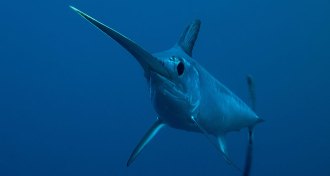 Animals
AnimalsTo zip through water, swordfish reduce drag
A newly discovered oil-producing organ inside the swordfish’s head gives the animal slick skin to swim faster.
-
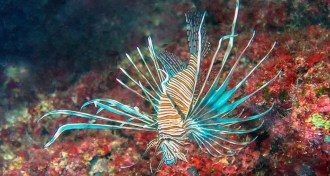 Animals
AnimalsLionfish invasion comes to the Mediterranean
Scientists had thought that the Mediterranean was too cold for lionfish to permanently settle there. But now they’ve found a population of the fish off Cyprus.
-
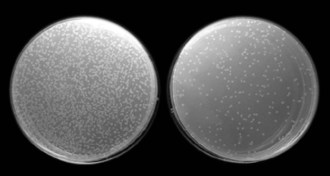 Neuroscience
NeuroscienceRewarding stimulation boosts immune system
Activating feel-good nerve cells boosts mice’s immunity, a new study suggests.
-
 Life
LifeLetting parasites fight could help battle drug resistance, too
Helping one strain of malaria trounce another in lab mice demonstrates a way of avoiding the evolution of drug resistance.
By Susan Milius -
 Climate
ClimateWarming alters mountain plant’s sex ratios
Global warming has different effects on male and female plants. Tracking sex ratio shifts could be a fast signal of climate change, researchers say.
-
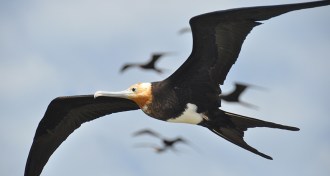 Animals
AnimalsFrigate birds fly nonstop for months
The great frigate bird can fly for up to two months without landing, thanks to a boost from wind and clouds.
-
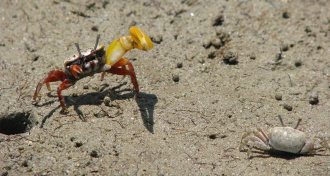 Animals
AnimalsSneaky male fiddler crabs entrap their mates
Some male banana fiddler crabs get a female to mate with them by trapping her in their burrow, a new study finds.
-
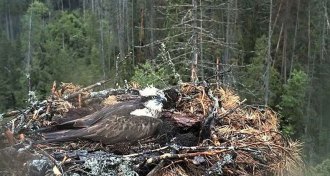 Science & Society
Science & SocietyEmpathy for animals is all about us
We extend our feelings to what we think animals are feeling. Often, we’re wrong. But anthropomorphizing isn’t about them. It’s about us.
-
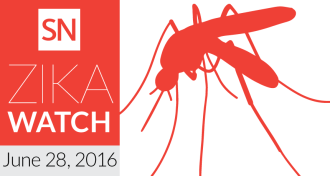 Health & Medicine
Health & MedicineThis week in Zika: vaccine progress, infection insights
Vaccine candidates for Zika virus take a step forward, birth defects span spectrum of problems and doubts about Zika’s link to microcephaly may be extinguished by new reports from Colombia.
By Meghan Rosen -
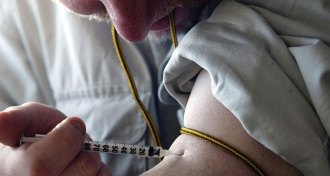 Health & Medicine
Health & MedicineVaccines could counter addictive opioids
Scientists turn to vaccines to curb the growing opioid epidemic.
By Susan Gaidos -
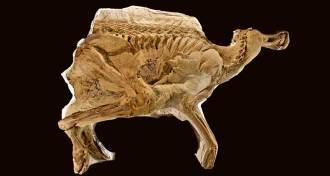 Paleontology
PaleontologyParasites wormed way into dino’s gut
Tiny slimed tunnels in the guts of a 77-million-year-old duck-billed dinosaur fossil offer the first hard evidence that dinosaurs may have been infected by parasitic worms, paleontologists say.
By Meghan Rosen -
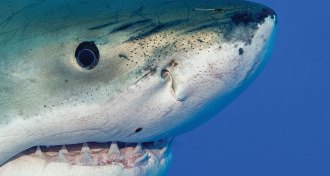 Materials Science
Materials ScienceShark jelly is strong proton conductor
A jelly found in sharks and skates, which helps them sense electric fields, is a strong proton conductor.